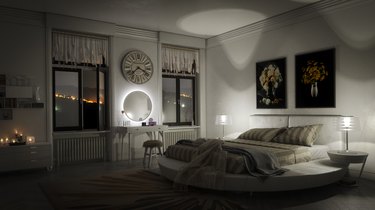Turning on an air conditioner is the quick and easy answer to hot days, but AC isn't always available. Even when it is, there are downsides: It can drive up your power bill dramatically, and it's not exactly the most eco-friendly appliance in your home. Keep your home cool with these 10 smart home hacks, which are good for the planet and your pocketbook.
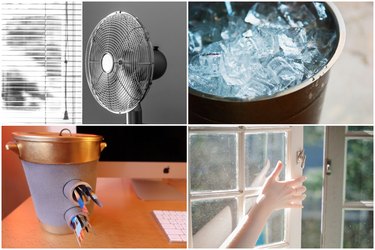
Video of the Day
1. DIY Cooling for Where You Are
It's a lot of work to cool the whole house, when really all you need to do is cool the spot where you are. You can make a simple DIY desktop mini air conditioner unit with just a few inexpensive pieces, including a USB fan, a plastic bucket and a some disposable containers. It does a fine job of keeping you comfy at your desk, or while you're watching TV from your favorite chair. You can follow the same basic steps to make a larger version from a foam picnic cooler, if you wish, and cool a a small room.
Video of the Day

2. Be Smart About Appliance Use
The heat outside is beyond your control, but heat inside is something you can manage. Your home electronics generate heat all the time, so if your home entertainment system won't be used until "couch time" in the evening, use a power bar to turn it all off during the day. The kitchen is a big offender, since most cooking methods generate heat. Whenever possible prepare food in the cool morning hours for later reheating, or use countertop appliances like a toaster oven or electronic pressure cooker instead of your range.
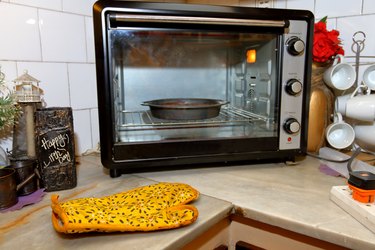
3. Leverage Your Home's Natural Air Flow
Whether you're going all-in on energy conservation or just have limited options, one of your best options is to harness natural airflow through your living space. Depending on your home's orientation relative to the prevailing winds, air will want to blow out of some windows and in the others. Find out which is which by hanging sheer curtains in front of an open window. Once you've identified them, open one window on the "out" side and one on the "in" side to get a nice air flow.

4. Make Your Window Coverings Work For You
Close the blinds on the sunny side of your house early in the day, before the sun gets there, or hang heavy drapes in front of the window. This traps the sun's heat at the window, before it spreads through your house. You can also have UV-filter coatings applied to the windows' glass, for a fix that's less of a "hack" and more of a long-term solution.
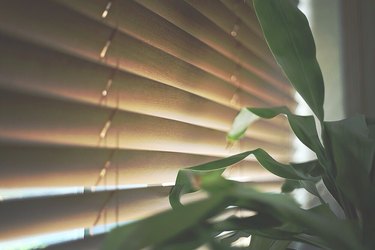
5. Limit Sun With House Plants
If you'd like to minimize the sun's impact but still provide meaningful shading, consider filling your windows with plants. They won't block the light the way a blind or heavy curtain will, but they'll still make a substantial reduction. Add in the visual appeal of dappled light through their leaves, and the fresh look plants lend a room, and you have a solid "win" on all counts.

6. Maximize Your Fans
Fans can do a lot to make you feel cooler, but they're most effective when you use them intelligently. Start by setting your ceiling fans to rotate counter-clockwise. If you're using box fans in the windows, make sure they're blowing in at your "in" window and out at your "out" window. Otherwise, you're fighting the natural air currents, and you'll lose that battle. Keep your fans clean and well-maintained as well: A clean fan moves are a lot more efficiently. Don't forget the exhaust fans in your kitchen and bath, either. Their ceiling-mount position makes them perfect for sucking hot air from the home.
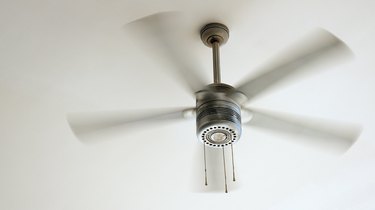
7. Harness Your Climate
In much of the country, "it's not the heat, it's the humidity!" is an everlasting summer complaint. You can make your indoors feel cooler by running a dehumidifier to draw humidity out of the air. Dry air doesn't feel as hot and oppressive, and a dehumidifier uses a lot less energy than an AC unit. If you're in a dry climate, go the other direction and hang some damp sheets or some wet laundry to dry. As the moisture evaporates it cools the surrounding air – the same principle commercial "swamp coolers" use – and makes your home more comfortable.

8. Take Advantage of Double-Hung Windows
You may find that there just isn't a strong natural "draw" through your home from one side to the other. If you have double-hung windows, you can still create a natural, passive airflow by harnessing convection currents. Open the top half of the window in one room, and the bottom half of one at the other end of your home. Warm air rises and will naturally exit through the one that's open at top, drawing fresh air through the one that's open at bottom. If you have a basement or a two-level house, you can use the same effect by opening an "out" window upstairs and an "in" in the basement or lower level.
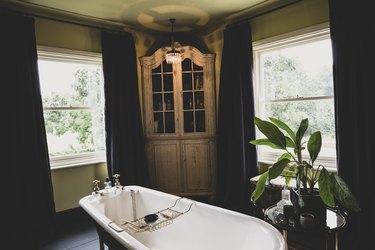
9. Close Off the Really Hot Rooms
How much of your home gets used during the day? For many of us, the answer is "not a lot." Even if you're at home with kids, your living room, kitchen and bathroom probably see most of the traffic. That leaves a lot of rooms little- or un-used, and if those rooms face the sun they're pumping heat into the rest of the house. Just keeping the doors to those rooms closed can help reduce the spread of heat to the rest of the house. It's not always a practical option, but it helps a lot when you can use it.

10. The "Overnight Low" Is Your Friend
If you live in an area where the nights are noticeably cooler than the days, that swing from daytime to nighttime temperature can fuel one of the simplest — and most powerful — options for passive cooling. It couldn't be easier: Open your windows at night, as the air is cooling down, and then close them again in the morning when the outside air begins to warm. In any reasonably well-insulated home, trapping the cool air inside at the beginning of the day can keep you comfortable for several hours, without having to lift a finger.
